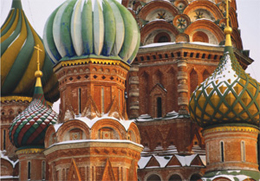The demand for certified diamonds is growing in Russia,
which brings more business into the fewer than one dozen Russian certification
labs. The number of diamonds certified by the country’s Assay Chamber has grown
from around 500 in 2001 to 7,700 in 2011. Gems weighing between .01 carats and
.09 carats make up 83 percent of all certified stones. The certification
business is increasing because more consumers are buying diamonds. Under Russian
law, the public can purchase loose diamonds only if they are sealed in special
boxes accompanied by certificates.
“Diamonds are becoming increasingly popular both as an
investment and as a gift,” said Maxim Viktorov, director of the certification
department at Moscow State University (MSU) Gemmological Center. The Russian
system of certification, which evaluates color and clarity in numbers — with 1
being the best — doesn’t directly correspond to international certification standards.
But, since there’s been more trade across the border, more companies want certs
based on international standards, such as those of the Gemological Institute of
America (GIA). “Around 30 percent of our clients want certification according
to international standards,” said Denis Slabkovsky from Smolensk Gemmological
Certification Center. As a result, Russian labs now grade gems in both systems,
although only the Russian cert represents the official value.
Labs also report seeing an increasing number of treated
colored stones, according to Slabkovsky, although there’s no statistic on how
many treated stones are circulating.
Aleksandr Stolyarevich from MSU Gemmological Center said an entire
department at the center is conducting research into all types of diamond
treatments, as well as emerald and ruby treatments. The center also is
developing methods of evaluating rough diamonds.
SALES TO STATE RESUME
Recognizing the current uncertain economic environment,
Russia’s largest diamond miner ALROSA recently made its first sale to the state
treasury since 2009 in an effort to stabilize prices and control risks. In the
second quarter of 2012, Gokhran bought 464,000 carats worth $108 million.
ALROSA said that the move would help maintain “an acceptable level of price
stability” in the diamond market and protect the company from such risks as
“lack of liquidity for a number of the company’s clients” and the overall fall
in market demand for polished diamonds and jewelry.
The miner expects the current “unstable” situation to last
until the end of 2012, according to its second-quarter report. The report said
that ALROSA, along with De Beers, had to make corrections to its price list at
the end of the second quarter because rough was selling on the secondary market
either at the list price or at a discount.
Sales by Russia’s state treasury also were affected by the
slowdown in the market. Gokhran sold around $31 million worth of rough in the
first six months of 2012. The planned sales of precious stones, including rough
and polished diamonds and emeralds, during 2012 had been expected to total
around $150 million. Sources at the treasury say the original projections have
not been revised downward yet because the hope is that sales will pick up in
autumn.
Gokhran sold slightly more than $26 million worth of rough
stones of 10.8 carats and larger in March and no second auction has yet been
scheduled for this year. The treasury sells diamonds only to companies
registered in Russia. Approximately $300 million has been allocated in the 2012
federal budget for the purchase of precious stones and metals for Gokhran.
COVERING COSTS
Polished sales were slow in August, again due to the turmoil
in the market generally and to the traditional summer slump. Jewelry companies
said the number of diamonds offered for sale at lower prices increased
dramatically, but those are usually the lower-quality stones. There were even
reports that some dealers were selling polished at dumping prices.
“In order to cover the cost of rough and of production, the
average price of a stone should be approximately double the price posted on the
Ministry of Finance price list, but some dealers are selling at 1.6 to the
price list,” said Elena Zhukova, the head of production at Zvyozdochka, an
Archangelsk-based manufacturer.
Jewelry makers were watching the decline in prices with
caution. “Any volatility is bad for business,” said Ilya Adamsky, marketing
director at Moscow Jewellery Factory. He explained that the company sets its
prices based on costs plus a stable profit margin, so wholesale customers are
unhappy when they see prices of similar items fluctuating during the year.
As evidence of more conservative spending, Adamsky said
jewelry without stones is showing the strongest demand. Svetlana Rakhmanina of
Rifesta said that even though her company’s main price segment is in the $3,000
range, it had expanded its $500 to $600 diamond jewelry collection for the
September Junwex Moscow jewelry show because less expensive items are in
demand. She also said that wedding and engagement ring sales, traditionally
strong in summer, were disappointing this year because fewer people want to
marry in a leap year.

THE MARKETPLACE
• In the first six months of 2012, ALROSA’s revenue —
excluding its Nyurba, Anabar, Severalmaz and Catoca subsidiaries — rose 27
percent year on year to $2.1 billion, while its net income fell 4 percent to
$495 million.
• ALROSA sold 27.7 percent on the domestic market and exported
72.7 percent in 2012, compared to the first half of 2011, when the distribution
was 30.4 and 69.6 percent, respectively.
Article from the Rapaport Magazine - September 2012. To subscribe click here.